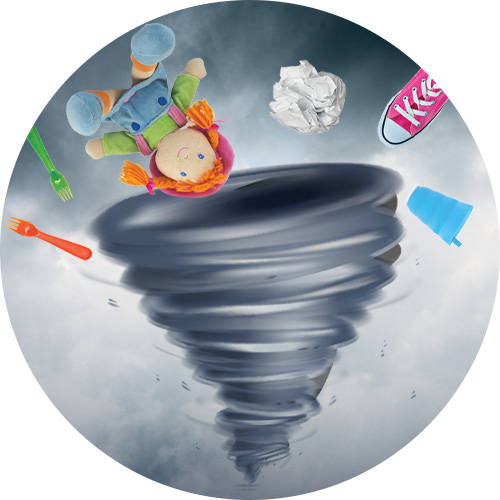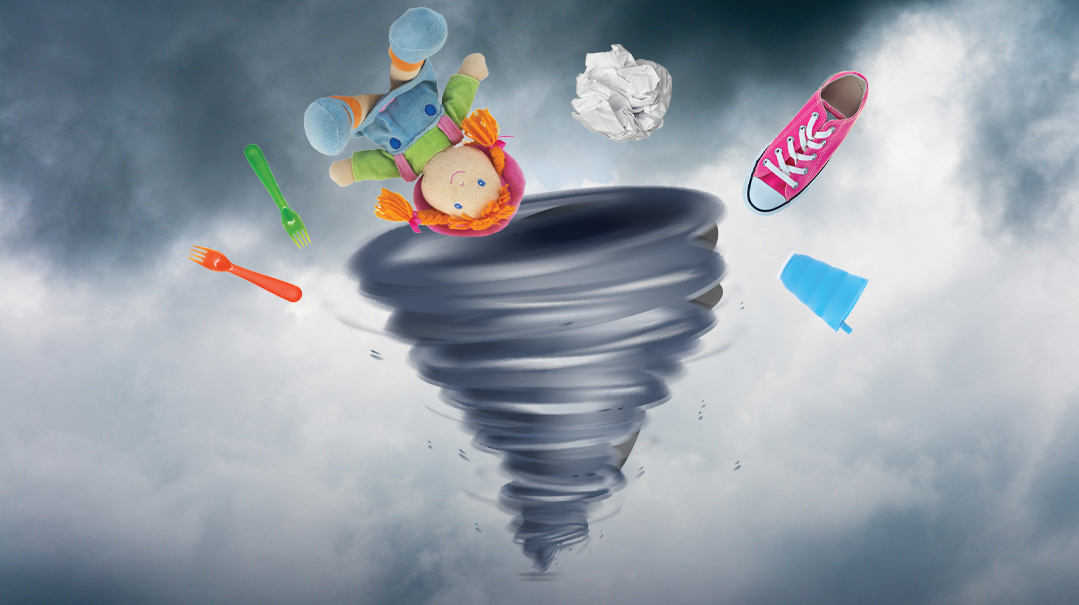I of the Storm: Chapter 17

“Ultimately, it’s a risk-benefit analysis,” Dr. Blakely summed up. “For a child with a true attention deficit, it’s almost always worth it.”

Dr. Blakely pushed a barely legible prescription across the desk. “There’s currently no physiological exam that can definitively diagnose an attention disorder. But based on the questionnaires — yours and her teacher’s — and my own impressions, I think it’s worth trying Ritalin for eight weeks.”
Daniel swallowed hard, his Adam’s apple doing a dive. This was really tough for him. He’d stayed up hours compiling an exhaustive list of anti-Ritalin websites, along with one-line summaries describing a rainbow of alarming effects: depression, anxiety, growth suppression, predisposition to drug addiction, and more. He thrust the printout across the desk. “What do you think?”
I bit my lip.
Blakely read it slowly. “Look,” he said, rotating his monitor in our direction so we could view the screen. “I’m all for research — good for you. But half the sources on this page are actually representatives of an erratic religious cult. Another 25 percent cite effects that are real — heightened irritability, increasingly greater ‘craving’ for the stimulant high, for example — but occur almost consistently with misdiagnosed patients who don’t need Ritalin, or misuse it. And the rest of the sites are privately owned ventures with little or no accountability.”
He clasped his hands together, looking straight into our eyes. “No long-term medication is ideal. But let’s take a look at the effects of untreated ADHD.”
He pointed to the screen, displaying a recent Danish study that followed 1.92 million individuals from birth to age forty, 32,000 of whom were diagnosed with ADHD. The startling conclusion: the rate of premature death was more than double for those with ADHD compared to those without ADHD — mostly due to accidents or substance abuse. And the earlier the children had been diagnosed, the lower the mortality rate.
Woah. Daniel’s eyes widened.
The doc flipped to another tab. Here, a study showing that when drivers with ADHD were treated with stimulant medications, their driving performance improved. And another study, this one comparing the results of methylphenidate (Ritalin’s active ingredient), neurofeedback, and physical activity: only stimulant treatment demonstrated specific improvements in impulsivity.
“Ultimately, it’s a risk-benefit analysis,” Dr. Blakely summed up. “For a child with a true attention deficit, it’s almost always worth it.”
Daniel nodded slowly, slipping the paper into his shirt pocket. “How will we know if it’s effective?”
The doc chuckled. “Oh, you’ll know. Shira will tell you herself — with words, and without.”
The visit was over. We stepped out of the office, navigating the labyrinthine hospital halls in silence. Daniel swung open the car door, plopped down, and turned to face me.
“I’m willing to try,” he said.
Trampoline? Check.
Chocolate milk and muffins? Check.
I was ready for the infamous 4 p.m. rebound. The craziness lasted only 20 minutes, but if I wasn’t prepared, the kids’ homecoming would be ruined.
Shira had been on Ritalin for three weeks now. For the first two, we saw no change — just a loss of appetite that transformed our slim second grader into a wild eating machine the instant the meds wore off. We phoned Dr. Blakely, who upped the dosage slightly: “enough to make a difference, but not enough to eliminate her vitality,” he’d said.
The modified dosage seemed to hit the spot. Just three days into the new regimen, Shira looked up at me while we were doing homework together.
“You know, Mom?” she said. “I’m smarter now.” She turned back to her workbook, placing her finger on the next subtraction exercise.
Oh, you’ll know. She’ll tell you herself.
Ritalin was no panacea. Shira was still insanely jealous of the twins, and she still struggled with organization. But the difference was undeniable. What amazed me most was the medication’s effect even hours after it had ebbed out of her system. Dinner table tantrums still graced our suppertimes, but they were rarer, and more short-lived.
“Makes sense,” Risa said when I described the phenomenon. “If Shira experienced less frustration and failure that day, she’s going to be happier at home.”
Daniel was just as taken aback, but sometimes, like during a particularly long car ride where Shira quietly gazed out the window for nearly an hour, he’d worry about snuffing out our sunshine girl. “I don’t want to lose the real Shira — the boisterousness, the personality, the drama,” he said.
Just then, Shira let out a shriek, banging on the glass. “Dad, I see a HUGE HOT AIR BALLOON!”
I looked at Daniel and smiled.
She’s still here, I silently conveyed. Our sunshine girl is still here.
(Originally featured in Family First, Issue 483)
Oops! We could not locate your form.


